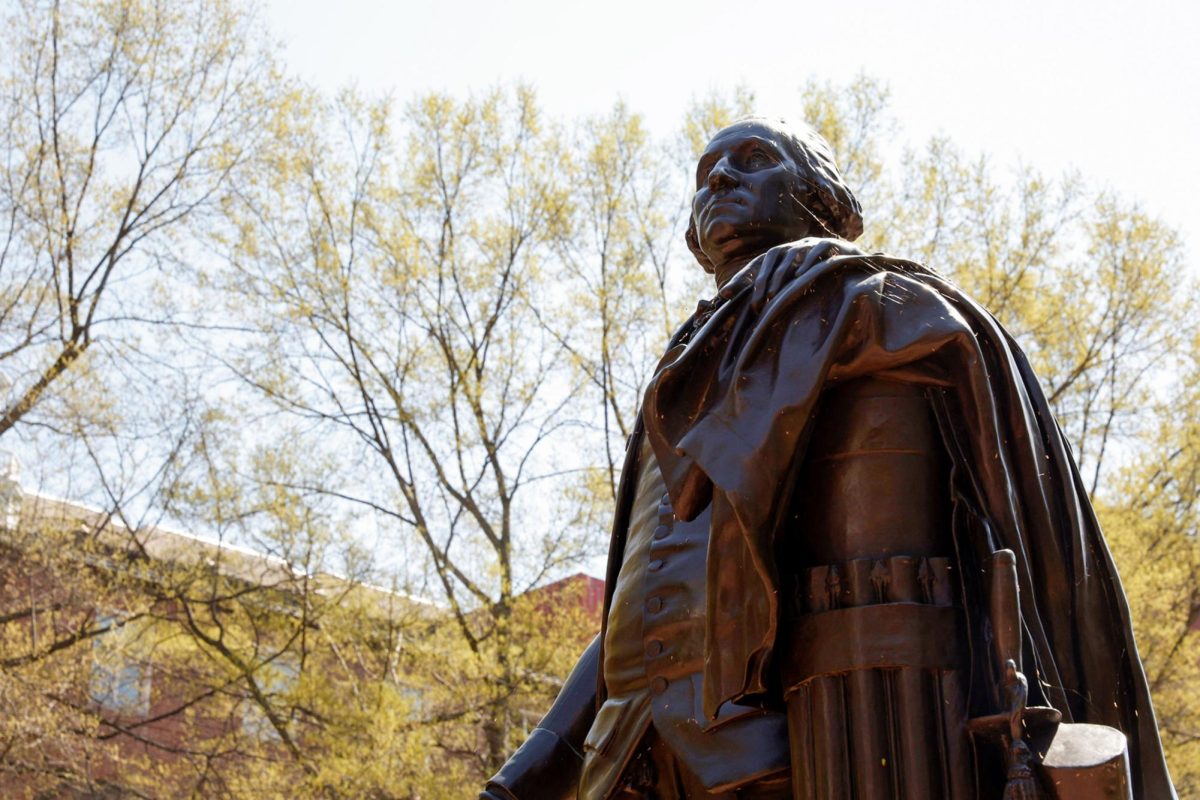Experts in sociology and gender studies said the increasing overrepresentation of female faculty in nontenure positions at the University reflects national gender disparities in higher education.
58.7 percent of nontenure-track full-time faculty at the University are women, according to the Faculty and Staff Headcounts Dashboard last updated in 2023, exceeding a 53.9 percent national average of female nontenure-track full-time faculty. Experts in higher education hiring trends and sociology said the overrepresentation of women in nontenure roles at the University is part of a greater gender disparity in tenure-track and nontenure faculty nationwide, with only 41.1 percent of tenured and tenure-track full-time faculty at GW being women in 2023.

The American Association of University Professors, a nonprofit association of faculty and researchers, published an analysis in 2020 of U.S. Department of Education data that reported 53.9 percent of all nontenure-track full-time faculty positions consist of female faculty.
54.8 percent of all nontenure-track full-time faculty at GW were women in 2015, culminating a 3.9 percent increase from 2015 to 2023, according to the Faculty and Staff Headcounts dashboard, which only provides headcount data for that time frame.
University spokesperson Julia Garbitt said GW is committed to supporting all faculty with equal opportunities to “thrive” and advance their careers, regardless of gender.

Garbitt said the overrepresentation of female faculty in nontenure-track full-time positions is not unique to GW and is a visible trend at many higher education institutions.
Thirty-two percent of tenured faculty at peer school Tufts University were women in 2022.
Academic tenure provides faculty with an academic freedom safeguard, according to the AAUP. The Faculty Code states that tenure is given to faculty whose “scholarly accomplishments” are considered excellent when compared to “successful” candidates at similar stages of their careers at other universities, as well as for candidates whose research is nationally recognized in the candidate’s field.
“The university remains committed to addressing disparities and supporting all our faculty to achieve equality and sustainability,” Garbitt said.
Ivy Ken, an associate professor of sociology, said men usually dominate tenured positions. She said universities provide more “structural rewards” like prestige, compensation and respect to tenured and tenure-track positions compared to nontenure positions.
“If you have men overrepresented in the high prestigious jobs and women overrepresented in the lower prestige jobs, then that is definitely a problem,” Ken said.
Ken said the higher concentration of women in nontenure-track roles may be more pronounced at GW than at other universities because the administration makes “deliberate decisions” to avoid the large investments of tenured roles, which may cost GW more money because tenured positions require higher salaries.
Tenure status for all regular faculty dropped to an all-time low this academic year, falling from 77.8 percent of faculty in fall 2014 to 70.7 percent in fall 2024. Officials said schools with higher enrollment can financially support higher investment and more tenured faculty.
She said GW will have too many nontenure-line faculty if academic freedom and research are not a priority for the administration, so she hopes to see University officials “stand up” to the Board of Trustees and commit money and resources to tenure more faculty in the future.
“From their point of view, they see a tenure-line hire as a bigger investment, it’s going to cost them more money in the long run. A nontenure-line hire gives the University more flexibility, they can fire people,” Ken said. “It just kind of is a way of maintaining the institution’s power to be able to rearrange the number of bodies that are over here instead of over there at will.”
Jennifer Musial, an associate professor of women’s and gender studies at New Jersey City University, said the quality of mentorship faculty receive when they’re in school and the age at which faculty complete their master’s and doctoral degrees are factors that contribute to the high representation of women in nontenure faculty roles.
She said receiving poor mentorship as a master’s student can hinder networking and professional opportunities, which are a barrier to research and tenure. She said the lack of mentorship is a “sexism problem” and has been an issue since women first entered higher education.
“I had terrible mentorship as a graduate student,” Musial said. “I didn’t have the cultural capital to know how to navigate higher ed, nobody I knew had a higher ed degree and so I didn’t have that mentorship from my professors but from one person who I met when I was an MA student, so you don’t have those people who are opening doors for you.”
Musial said men are typically more willing than women to give up their “supportive network” and location for job opportunities, while women, specifically mothers, are more likely to stay in the same place. She said since men are more willing and able to relocate, they are able to apply for the few tenure-line positions at universities that women cannot.
“I think women and queer faculty members especially are less likely to give those things up because they’re what sustains us, like our communities and our family,” Musial said. “So that’s part of it. It’s the age at which you come out of graduate school, what your life looks like, what concessions you’re willing to make.”
Musial said research can help faculty achieve tenure because publicity in research publications can provide faculty with opportunities for “long-term” positions.
She said research opportunities has worsened amid President Donald Trump’s grant funding policies because the Trump administration’s restrictions on anything it deems political, like “banned words” including “community development” in grant applications. She said it can cause grants for hiring nontenure-track faculty to “dry up,” and lead to hiring freezes.
Officials announced in February they were implementing a “position management review process” to add an extra level of review during hiring and ensure GW stays within its budget after Trump’s recent executive actions targeted at higher education. A federal funding freeze issued by the Trump administration in February additionally delayed and canceled many federal research grants at institutions across the United States.
Joya Misra, a distinguished professor of sociology and public policy at the University of Massachusetts Amherst, said gender disparities in higher education can negatively impact the U.S. economy because university research is a leading sector of the economy. She said by creating positions that are “less supported,” like nontenure positions and filling them with women, institutions’ hiring practices reflect gender inequality and an “underinvestment” in higher education.
“The message I often try to give is that these are solvable problems, that institutions can make different choices, that unions can force institutions into making different choices so that faculty get more support,” Misra said.
Rachel Pollack, an adjunct professor of writing, said working in a nontenured position at GW over the past two decades comes with rewarding encounters in the classroom but is followed by a looming hope for a higher paycheck and full-time job status. She said she is grateful for her job because she loves teaching and working with her students but said she feels as though her effort “doesn’t go anywhere.”
“I don’t think anybody has that long-standing grudge against me,” Pollack said. “But I think it’s something to do with being a single woman who’s willing to do a job at half pay. Why should they advance me?”





